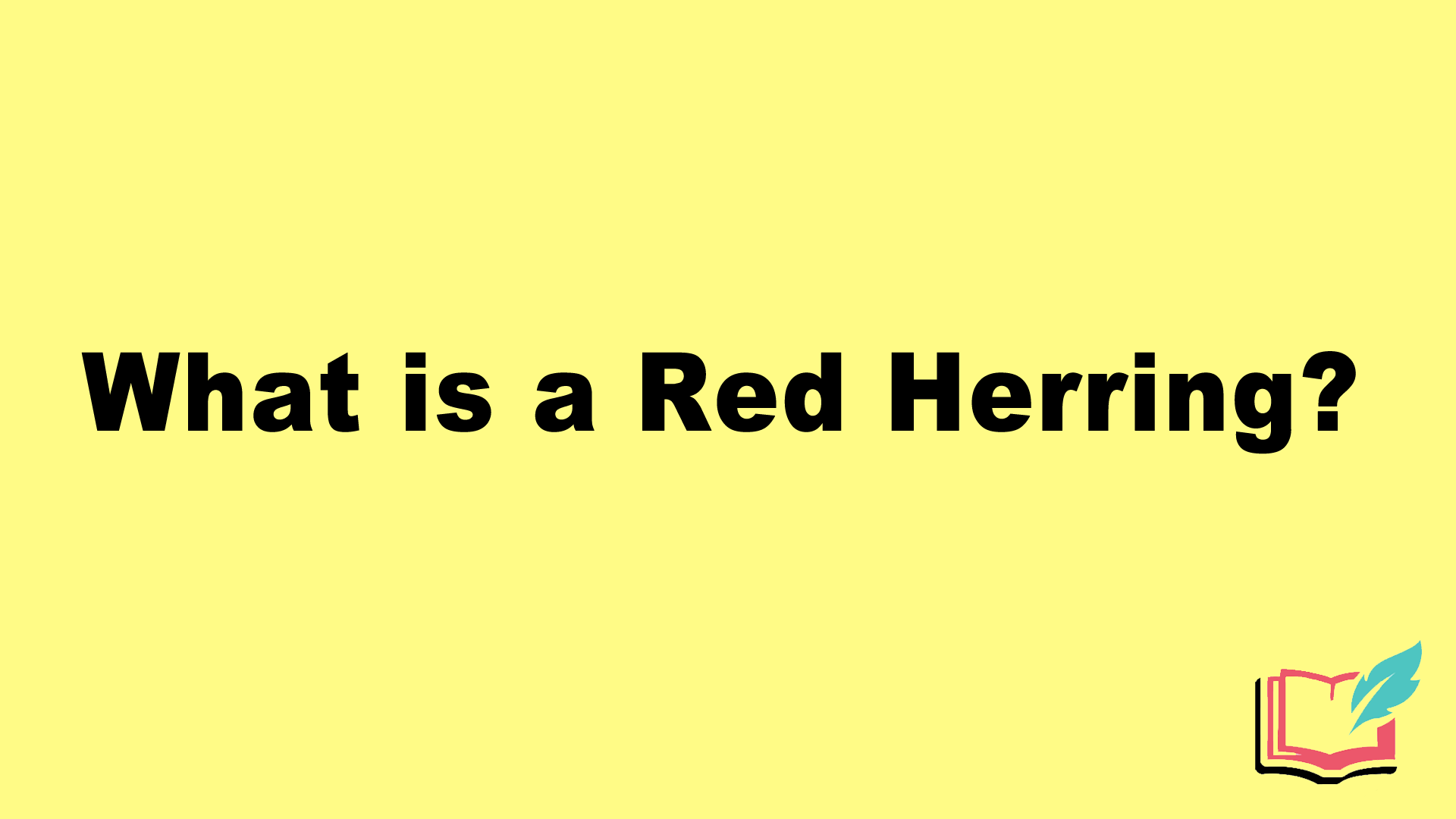
A red herring is a type of fallacy in which an irrelevant detail is presented that serves to distract the audience from guessing the outcome. Red herring presents as fact and serves to mislead the audience so that the author can create a shocking effect.
What is a Red Herring?
Red herring is an intentional deception on the part of an author to mislead readers from the truth. This device is often used in mystery and suspense novels so that the audience does not pick up on the truth so early that it would kill dramatic effect.
An example of red herring would be putting a child to bed for the night. Most children want to try and stay up and will start asking their parents questions. A mother telling her child that it is time for bed might be met with a response such as “where do clouds come from?” in order to prompt the mother to elaborate thus resulting in the child staying out of bed. In terms of its use in literature, this type of distraction works well to keep readers in suspense.
Red Herrings vs. Other Logical Fallacies
Red herrings are a type of logical fallacy; specifically, they are considered an informal fallacy.
Logical fallacies involve mistruths misleading the mind and an informal fallacy, specifically, deals with unclear statements in which the language can be reasonably interpreted to explain something in more than one way. A formal fallacy, on the other hand involves an error in the expression and whether or not the original content can be considered valid.
Red herrings are a type of informal fallacy because the possibilities for their interpretation and validity can be argued in several different ways that might all uphold reasonable points. Red herrings can relate to several different types of logical fallacies such as:
- Ad hominem – appealing to feelings rather than intellect, specifically an attack on someone’s character. Like red herrings, ad hominem can be used to deceive audiences
- Non sequitur – statements that do not follow fundamental principles of logic/reasoning and often create a comedic effect. This differs from red herrings because the logic cannot be upheld and any deceptions are due to invalid logic, rather than deception
- Other logical fallacies include false dilemma, strawman arguments, and begging the question
The Importance of a Red Herring
Red herring is mostly used in the mystery genre to distract the reader from guessing the culprit too early. In a mystery novel, the red herring might be signs that point at one character being the killer the whole time, but it was ultimately someone else. This sort of confusion keeps readers stimulated throughout the entirely of the story. Otherwise, they might figure it all out too soon and lose interest.
In arguments, red herrings are used to dodge difficult conversations or questions. This is done by answering a question or speaking on a topic in a matter that is really just addressing something else altogether. Overall, red herrings create tension and are a powerful tool for distractions.
Red Herring Examples in Literature
In Arthur Conan Doyle’s The Hound of the Baskevilles, the most obvious suspect remains the butler for much of the story because he acts suspiciously and enjoys creeping around late at night. As it would turn out, however, his creepy actions were entirely innocent, and he actually had nothing to do with the murder. The presentation of his weird behaviors were meant to throw off the reader from figuring out the real culprit.
The hit And Then There Were None by Agatha Christie involves a group of murderers who got away with their crimes coming together to an event on a remote island. However, their host never arrives, and weird things begin to happen which result in the characters being killed off one by one. The red herring in this novel involves a faked death in order to throw readers off the scent.
Recap: What is a Red Herring in Literature?
Red herrings are an intentional fallacy used to throw readers off from the truth. A red herring is typically information that is presented in such a way to lead the audience to believe one thing is true, when in reality the actual truth will be revealed later in the story. Red herrings create tension and suspense and are particularly common in mystery novels.
